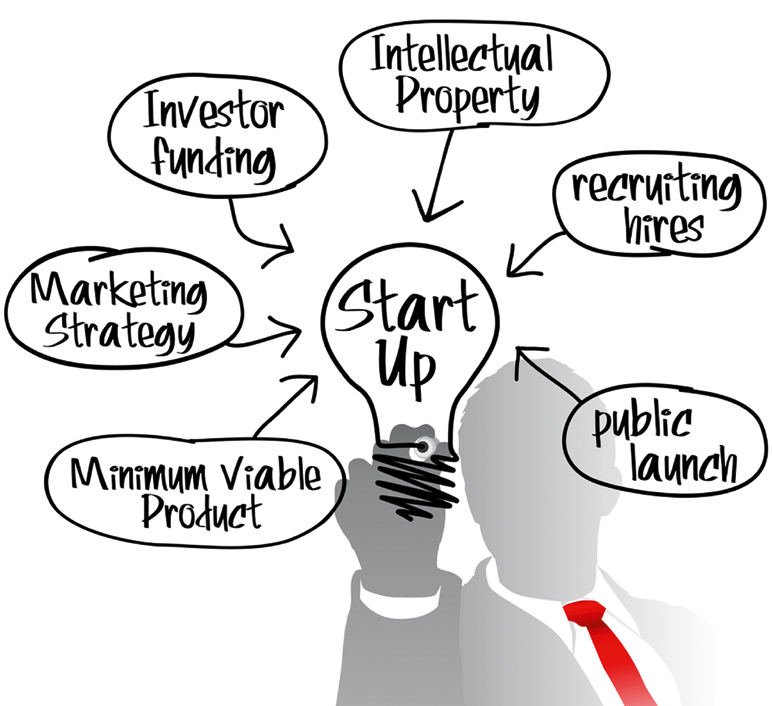A Step-by-Step Guide in Starting a Small Business
By Excel V. Dyquiangco
Many people think that starting a small business requires a lot of capital. Wilson Lee Flores, President of Red Apple Properties and Management, Inc., a dynamic realty brokerage firm, however, debunks that thought. “I recommend that you look for any small business or trading opportunity which will not require any big capital on your part, or any business which particularly interests you,” he says.
“More than the capital, I think that every entrepreneur should ideally have many, if not most, of these qualities to ensure the success of any business: be pro-active or have self-initiative, disciplined mentally and physically, open-minded, hardworking, resourceful, confident, gutsy so not to be afraid of risks and success (some people prefer to stay in the familiar comfort zone of smallness), optimistic or possesses the ability to think positively, competitive, determined, persevering, action-oriented, sociable or people-oriented, energetic, eternally inquisitive and willing to learn, resilient, has leadership quality, and is passionate.”
With that said, here is a step by step guide to knowing how to start your own business.
Step No. 1: Start with an Idea
To start a business, ask yourself what your interests are, your hobbies, or ideas for any type of business, product, or service. One interesting way to develop or come up with a business idea is to consult your family members, friends, or other people for their opinions. “Not all proposed business ideas turn out well, but do not forget that many of the successes on earth – whether in business or other endeavors – do not necessarily start out as instant or outright successes,” says Flores. “Some ideas might be good, some not so good, some ideas are too early or need to be modified, others might become so-so, but still we should try.”
Step No. 2: Identify Your Target Customers or Market
“I suggest that your idea for a business, product, or service should not only be based on your personal interests, but should also assess the potential customers or market or the need of people,” says Flores. “I’ve read and heard tales of some business people who thought of ideas or products or services which people needed, but the people then did not realize they needed it. That is a good starting point too for planning a possible future business.”
Step No. 3: Get the Money
Raise the capital either from your savings, a loan from family or friends, or a bank loan. You can also try getting an investor or business partner. As an option: you can also pawn your jewelry or sell your belongings through a garage sale, for instance. “It is practical to have capital which can sustain the new business for at least one year of no income or not much profit,” says Flores.
Step No. 4: Hire People
Aside from you, who else will be your employee or employees? Who would help you run your business – just you or with the help of family members and friends? “A choice of good people is very important not only in a business, but for any endeavor or organization,” says Flores. So during interviews and examinations you need to sift them thoroughly and ask the right kind of questions. Get some feedback from family members as well.
Step No. 5: Strategize
Think of your business strategy or business plan. “Write down and plan out the nittygritty details of setting up the business either as a single proprietorship, a partnership, or a corporation; and the legal procedures to register a business and the business name,” says Flores. “You also need to study the competitors in the market right now, strategize the operations and also know how to promote or market your business to your target clientele.”
Self-made British billionaire Richard Branson says it best in his book Like A Virgin: Secrets They Won’t Teach You at Business School. “If you don’t enjoy what you are doing then don’t do it,” he says. “Business requires a lot of time and hard work so enjoy it and love your business. Be visible too. Don’t just hide behind a desk as a boss, go out and keep on meeting people – whether your staff or your clients. Pride of association works wonders. People or employees are your firm’s biggest assets – make people proud and happy to be associated with your business.”
So when your business has finally taken off the ground, the journey still starts – and it is a continuous process that you need to develop. “To ensure that your business remains solid – with lots of customers and clients – after doing this step by step guide, you need to take care of the following too: good customer service, good and consistent quality of your products and services and one which offers customers value for money (not necessarily cheap prices),” says Flores.



